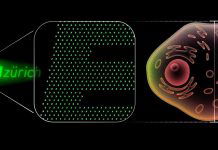
Scientists from around the world have created a powerful new material that can pull clean drinking water directly from the air—and it’s so light, it’s almost weightless.
This breakthrough could be a game-changer for the 2.2 billion people around the world who don’t have reliable access to safe water.
Led by Associate Professor Rakesh Joshi from the University of New South Wales (UNSW) and Nobel Prize winner Professor Sir Kostya Novoselov from the National University of Singapore, the research is part of a global collaboration that includes experts from Australia, China, Japan, India, and Singapore.
Their study was recently published in the Proceedings of the National Academy of Sciences.
The new material is based on graphene oxide—a super-thin carbon sheet mixed with oxygen—which already has the ability to attract water.
But the researchers discovered something remarkable when they added calcium ions (charged calcium atoms) into the graphene structure. Both calcium and graphene oxide on their own can absorb water, but together, they created something far more powerful.
The combination formed stronger-than-expected hydrogen bonds with water molecules, allowing the material to hold over three times its weight in water.
It wasn’t just an additive effect—it was something far greater, like 1 plus 1 equaling 3 or more.
The secret lies in how the calcium bonds with the oxygen in the graphene. This bond creates a unique chemical structure that makes water stick more tightly to the material, increasing its ability to pull moisture from the air.
To make the material even better, the team formed it into an aerogel—one of the lightest solid substances known.
Aerogels are filled with tiny pores that create a huge surface area, allowing them to absorb water much faster than regular graphene oxide.
The best part? Releasing the collected water doesn’t take much energy. A simple heating process at just 50°C is enough to release the water from the material, making it practical and energy-efficient.
The scientists also relied on the computing power of the Australian National Computational Infrastructure supercomputer to understand the exact way calcium and graphene interact at the molecular level.
These simulations helped confirm why the material performs so well and will guide further improvements.
While this is still early-stage research, the team is now working with industry partners to scale up production and build a prototype that can be tested in real-world conditions. The ultimate goal is to develop a system that can provide safe drinking water in areas with high humidity but limited infrastructure.
According to Professor Liming Dai, director of the ARC Center of Excellence for Carbon Science and Innovation, this discovery shows how powerful international scientific cooperation can be.
By combining advanced materials science, global teamwork, and real-world need, this featherlight material could soon bring clean drinking water to people who need it most.



